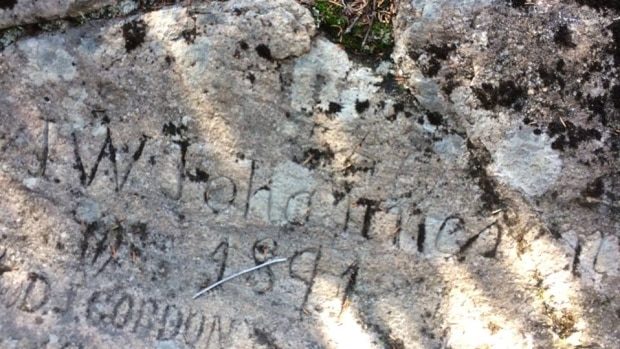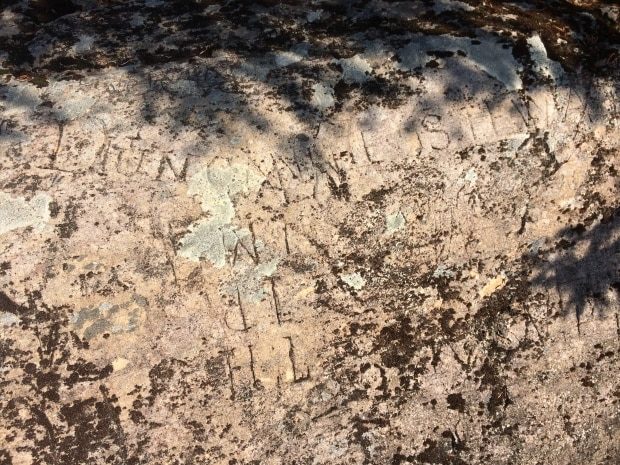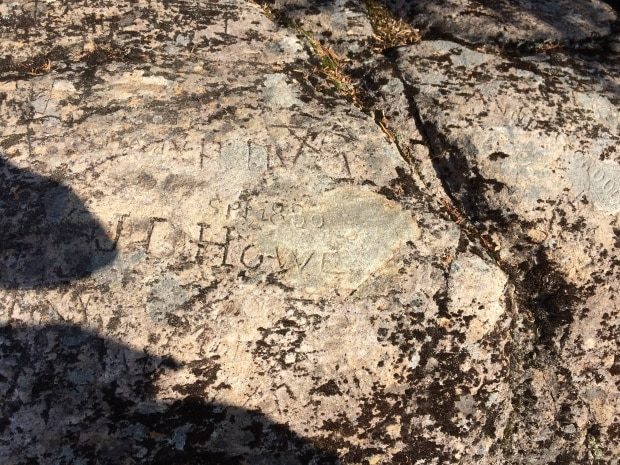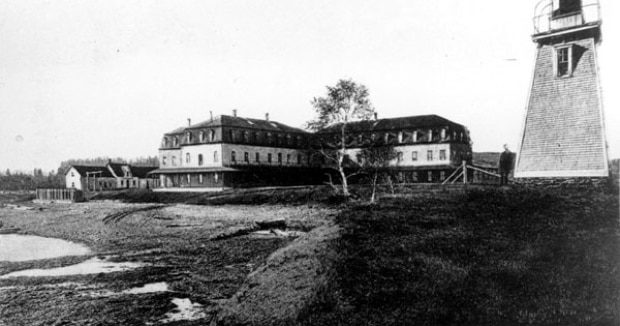
Bill Clarke, the director of the Restigouche Regional Museum, said there's no concrete explanation as to who carved the names or why.
Clarke also said not a lot of research has been done to find out.
"We haven't really done a lot of research on them largely because there's so much else to do."
The discovery
While someone must have known about the existence of the name carvings, their modern day discovery took place sometime in the late 1980s or early 1990s.
A crew was working on the mountain, cutting what would become the New Brunswick trail. Gary Archibald, one of the men working on the crew, said the names were found while bulldozing the new trail.
"We found it by accident," said Archibald.
Archibald said the rocks were covered up by moss when the crew happened upon them. The crew kept their distance though and informed the local museum.
"We didn't want to open up too much of the mountain to see how many names was there because we didn't want to deteriorate it. The moss had been protecting them," said Archibald.
A theory
"Dalhousie was a summer resort," said Clarke, largely in part because of the local resort hotel, the Inch Arran House, which opened in 1884.
Archibald said he hadn't heard of the existence of the stone-carved names before the crew uncovered them.
While Clarke said there is no definitive explanation, he has a theory and it points to a more prosperous time in the town's history.
In the late 1800s and early 1900s Dalhousie was a popular destination for tourists.
"Dalhousie was a summer resort," said Clarke.
Much of the town's reputation as a resort town came from the local hotel, the Inch Arran House, which opened in 1884.
"It predated the Algonquin by a number of years," said Clarke.
"In fact at some point later on, William F. Ganong wrote an article where he essentially called Dalhousie the Saint Andrews of the north."
Clarke believes the mountain was just another site for tourists in the area to visit.
"I suspect some of the people who were vacationing at Inch Arran House would hike up there and add their names to the rocks," said Clarke.
Famous guests
"You had some very distinguished people coming to Dalhousie during the summer," said Clarke.
"Sir John A. and Lady Agnes MacDonald came down and spent a good deal of the summer [of 1887] at Inch Arran House...They were back again the following year."
In 1887, Clarke said MacDonald's government even had a federal cabinet meeting in Dalhousie, which, like it would today, attracted much media attention.
State of the rock

However, there have been issues with keeping the names in pristine condition.
"There have been some people who, rather unfortunately, carved additional names in some cases over the old ones," said Clarke, "which doesn't help from a historical point of view."
Clarke said the museum has looked into ways of protecting the names; however, they were advised that protecting the site may not have positive results.
"Anything that we did would actually attract more attention to the rocks and might lead to more vandalism than they would otherwise experience," said Clarke.
Do you have any information on the carvings? Help us solve this mystery, email your tips.





Reader Comments